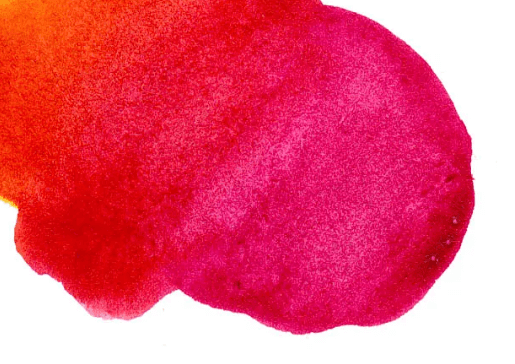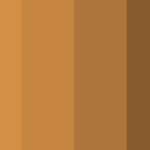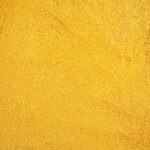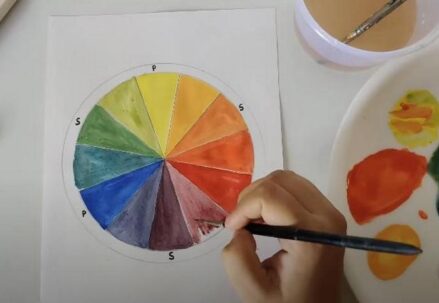The enigma of color theory is a cornerstone in the realms of visual arts and design. Stripped to its most fundamental, it provides a cogent structure for grasping and reshaping colors. This proves invaluable when we embark on an odyssey into largely abstract queries such as “What hue emerges from mingling pink with red?” Seemingly trivial questions like these are at the crux of the mesmerizing world of color theory, delving deep into the interactions and aesthetic effects birthed by diverse combinations of hues.
But hold! The potency of color theory transcends mere mixtures. Consider how this intriguing discipline can illuminate our understanding when we delve into behavioral aspects tied to visual perception; consider how shifting backgrounds can dramatically transform our perception of a given hue. A question that may seem simple — say, “what hue does pink combined with red yield?”— reveals its complexity upon further inspection. While responses might shift based on context or specific shades involved, engagement with such inquiries refines one’s grasp on this multifaceted subject matter.
The Role of Primary Colors
The beguiling realm of color theory is commanded by primary colors, the supreme triad – blue, yellow and red. These three dignified shades provide the bedrock from which all other hues spring forth. Undoubtedly, it is through these essential primary colors that we perceive the resplendent tapestry of hues around us – a vibrant rainbow teeming with seemingly endless tints and tones.
Examining more closely, each shade our eyes behold is in truth just light dancing and dispersing in ways that our ocular faculties interpret. A captivating instance of this effect can be observed in the marriage between light pink and red. Red—a steadfast member of our principal color trinity—gives rise to light pink when it coalesces with white. Ultimately, every nuance of pink we discern depends predominantly on how much red there is present; its interaction with white or rather scientifically speaking—the absence of full-color absorption—is another crucial factor at play here. This phenomenon exemplifies perfectly how intrinsic primary colors are to creating the rich kaleidoscope of shades we revel in.
Continuing on this topic, the primary colors not only serve as a foundation for creating other hues but also play significant roles in our daily lives. They are used extensively in various fields such as art, design, and marketing due to their attention-grabbing properties and emotional impacts.
- In the realm of art: Artists use primary colors to create an unlimited array of shades that breathe life into their artworks. The manipulation of these three basic colors allows artists to evoke specific moods or atmospheres within their works.
- Blue is often associated with calmness and tranquility.
- Yellow brings forth feelings of happiness and energy.
- Red tends to signify passion or danger.
- Within the sphere of design: Designers utilize primary colors strategically in order to stimulate certain responses from viewers.
- Blue can be used to create a sense of trust and stability.
- Yellow may be employed for its ability to capture attention quickly.
- Red might be chosen when trying to elicit strong emotions or urgency.
- Pertaining specifically to marketing: Marketers harness the power of primary colors in branding strategies because they understand how these hues influence consumer behavior.
- Blue is often utilized by businesses wanting to project reliability or professionalism.
- Yellow can help brands stand out amidst competition due its high visibility even from a distance.
- Red, being highly stimulating color visually, is frequently used by fast-food chains as it has been found that red induces hunger.
While it’s easy for us take them for granted given their ubiquity; blue, yellow and red—the fundamental triad—have profound influences on our perception world around us—from aesthetic appeal all way through psychological reactions they induce within us—making them truly indispensable elements both artistically speaking well practically everyday life scenarios.
Exploring Secondary and Tertiary Colors
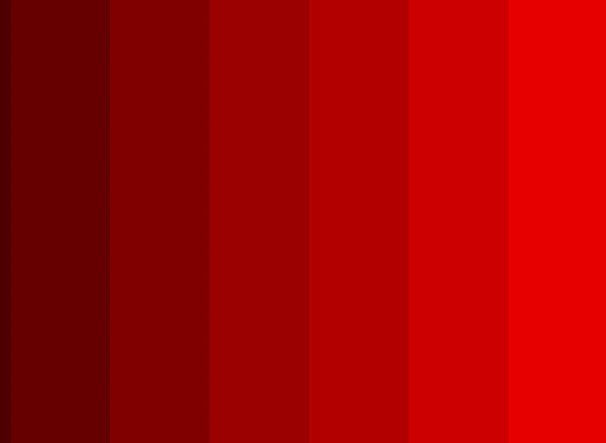
As we plunge into the labyrinthine depths of color theory, a tantalizing spectrum of hues unfurl before us. A particular shade that captivates attention is the elusive hue nestled between pink and red. Frequently stirring up heated discussions among artists and designers alike, this curious tint serves as an intriguing gateway to the realm of secondary and tertiary colors.
Secondary hues emerge from the blend of any two primary pigments; green, orange and purple being prime examples. On the other hand, tertiary shades are birthed from mingling a primary with its secondary counterpart – think red-orange or yellow-green. An adept manipulation of these secondary and tertiary palettes can dramatically amplify the depth and vibrancy within any visual display. Therefore, discerning nuances between seemingly similar tones like pink and red could be a veritable boon in countless creative pursuits.
Concept of Mixing Colors
Within the enigmatic realm of chromatic expression, one could find themselves ensnared by a riddle, “Does pink carry more darkness than red?” On the surface, this inquiry seems direct yet it calls for an inherent comprehension of the elusive artistry involved in color amalgamation. The conduit to crafting different shades and hues lies within our grasp on primary colors. From time immemorial these have been recognized as being red, blue, and yellow. These three irreplaceable pigments possess limitless potential in creating every conceivable hue under the rainbow including secondary and tertiary spectrums.
These expansive color bands then engage in a dance of blending to birth a multitude of shades and tones that bewilder even the most seasoned artist’s palette.
As we delve deeper into this fascinating world of tint manipulation, it’s important to underline that conventionally pink is not seen as bearing more darkness than its intense counterpart – red. Instead, pink is viewed as merely a lighter shade or perhaps just a delicate hint of redness.
Pink gains its identity when white gently infiltrates purest red diminishing its ferocity whilst nurturing its softer characteristics into existence.
In terms of our all-knowing color wheel guidebook – pink finds itself nestled towards the inner circle thereby highlighting its intrinsic light value vis-à-vis the outward-facing assertiveness exuded by intensive red.
This finely nuanced understanding about how colors blend together forms an indelible cornerstone across various domains such as fine arts or design industry circles; it also holds sway over fashion landscapes.
The Science Behind Combining Pink and Red
Ensnaring oneself in the profound intricacies of color interaction’s fundamental science, one encounters a paramount facet that demands contemplation – the intriguing phenomenon of color fusion. Venturing deeper into an enigmatic question – how does one morph pink to more closely resemble red without employing red itself? One must arm themselves with an intimate understanding of color theory.
Existing within every shade of pink is a whisper, a hint of its progenitor, red. This kinship arises from blending white into the core essence of fiery red. Thus, each strand of pink DNA reverberates with echoes from its ancestral crimson lineage.
As we seek to embolden this latent quality and coax out more resounding notes of redness from within our delicate hue without resorting directly to additional splashes or specks or drips of pure unadulterated red; it seems we might find our answer lurking subtly among complementary colors. A gentle introduction perhaps, but a well-placed stroke or two drawn from across the spectrum – say for instance dabbling in soft green hues – can nudge innocent blushing pink ever so slightly toward its bolder parentage on the chromatic scale.
This deft manipulation conjures up an optical illusion which tricks our visual senses into detecting undertones that are not inherently present but brought forth by external influences. The resulting perception nudges us towards acknowledging a stronger affiliation between pink and her mother-color, thus augmenting her innate vermillion traits. An essential principle is at play here: illustrating how colors coexist in harmony yet possess subtle powers to sway perceptions about each other—an artful dance illustrative precisely as much about relationships as it is about pigmentation—a cardinal cornerstone embedded deep within the heartland called ‘color theory’.
Determining the Result of Merging Pink and Red
In the labyrinthine process of fusing colors, notably the hues of pink and red, there are intricate aspects and theories that demand careful consideration. The amalgamation’s final product is predominantly swayed by an array of elements such as the volume, vigor, and variant of each color drawn into this fusion. It warrants a recollection that pink essentially represents merely a paler shade of its counterpart red. This suggests that incorporating more red to pink simply augments its saturation – thereby yielding a spectrum that oscillates between lush rose tints to profound burgundy tones; contingent on how intensely both pink and red have been employed.
The artistry involving the union of these two colors isn’t confined within the boundaries of canvas or digital interfaces alone. Such blend embodies far-reaching implications in diverse realms – from interior design to fashion aesthetics. These domains harness the elegant metamorphosis from blush pinks to vibrant reds; crafting designs which stir sentiments synonymous with warmth, vivacity, affection – for it’s believed these shifting hues encapsulate such emotions profoundly. Thusly, one might assert: merging shades of pink with those of red transcends beyond just conceiving new tints; it delves deeper into invoking feelings and leaving impressions.
Influence of Light and Shadow on Color Perception
The enigma of natural and man-made luminescence shapes our visual discernment of hues in a paramount manner. It is indeed an inscrutable reality that colour spectrums may transfigure under the flux of divergent lighting conditions. When beams illuminate an entity, it’s not the absorbed spectrum but rather the reflected hue which commands our ocular perception.
Thus, what we perceive as an object’s color hinges profoundly on the quality of light interacting with said object. Consider this – a crimson apple under fluorescent irradiation might seemingly morph when observed under incandescent light or bathed in sunlight; quite a spectacle for unshielded eyesight.
Shadow play adds another layer to this complex narrative by wielding remarkable sway over how we decode colors. They serve as nature’s own desaturating elements, subtly tempering vibrancy and adding depth to objects – bestowing upon them a three-dimensional persona which greatly enriches our apprehension of their form and color palette.
Hence, even if an object retains its original coloration, its outward display can oscillate dramatically depending on variations in illumination or shadowy presence. This realization forms the vital backbone for industries like visual arts, interior design and photography where replicating true-to-life colors isn’t just desirable but indispensable.
FAQs
Color theory offers a logical framework for deciphering colors. It illuminates how different shades interact with one another, how we can blend them to generate novel hues, and their psychological implications. Grasping color theory is pivotal to fully understand the concept of color perception.
Primary colors form the core palette from which all other shades are originated. As they possess unmatched intensity and purity, they hold significant sway over our perception of colors. Their vibrancy and clarity can manipulate perceptions related to distance and proximity, as well as influence moods and sentiments.
Secondary and tertiary hues are birthed by blending primary ones thereby widening our spectrum of perceivable shades. This facilitates a more refined comprehension of colors, enabling us to differentiate between nuanced tints while better understanding spatial relationships.
The principle behind mixing different tones plays an instrumental role in affecting our interpretation of those hues. It brings forth an array of shades adding depth to our visual experience by enhancing dimensions seen through these pigments mixtures. Furthermore, grasping this concept enables us predict outcomes resulting from different combinations.
When pink merges with red it forms a gradient varying from rich deep crimson tones right up till soft light pinks; owing primarily due to pink being essentially lighter version or diluted variant or Red hue itself . The resultant shade is dictated by intensities both colours bring into play when mixed together .
Merging Pink & Red gives rise myriad range depending upon proportions each colour used. It maybe produce anything from deep scarlet to soft blush hues . The final shade is contingent upon the saturation and intensity of original parent colours Pink & Red.
Light and shadow introduce significant variance in how we perceive colors. Illumination can enhance or mute a color’s vibrancy, while shadows contribute depth and texture, thereby modifying our interpretation of it. Different forms of light, as well as reflective or absorbent surfaces also have the capacity to alter a hue’s appearance.
